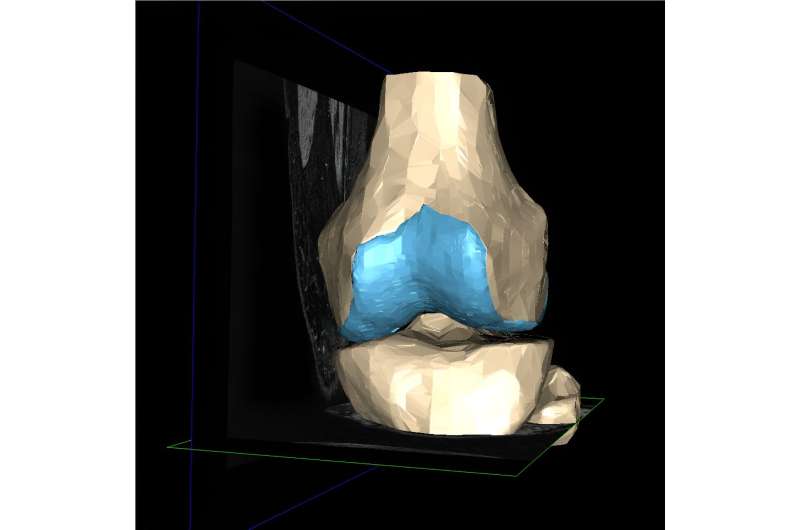This article has been reviewed according to Science X's editorial process and policies. Editors have highlighted the following attributes while ensuring the content's credibility:
fact-checked
proofread
Scientists warn of a 'tsunami' of osteoarthritis cases by 2050

Osteoarthritis (OA) is a degenerative disease that affects weight-bearing joints. The most commonly affected joints are the knees, hips, spine, and small joints in the hands. Two out of three people over 50 have creaky and cracking joints that cause daily pain and reduce their mobility. It's an increasing problem because the world population is getting older, and humans are becoming more and more sedentary, overweight, and obese.
Osteoarthritis is also surprisingly common in younger people, especially in those with poor diets and lifestyles and even fit young people who have had traumatic joint injuries. In severe cases, arthritis can lead to significant disability of a person.
Overall, OA is a chronic condition that requires ongoing management to alleviate symptoms and maintain joint function. Early diagnosis and appropriate treatment can help slow its progression and improve overall joint health.
Although osteoarthritis affects more than 500 million people in the world, according to the World Health Organization, there is no cure or any approved drugs to treat or prevent the disease and the only available treatments are painkillers, anti-inflammatory medications, and total joint replacement.
This highlights the societal impact of the disease and the need for more concerted action to develop more effective treatments that can be used to treat and prevent osteoarthritis.
A new consortium to tackle the problem
By the year 2050, 1 in 3 will suffer from osteoarthritis, and to this day, there is no cure. Therefore, the aim of the NetwOArk COST Action—The Open European Network on OsteoArthritis—is to set up a European Society for Osteoarthritis. Launched, in October 2022, the network gathers patients, clinicians, and researchers, from academia and industry in 17 countries.
NetwOArk intends to build an inclusive network and a new society that brings together all the major key players, including patients, patient advocacy groups, scientists, doctors, pharmaceutical companies, small and medium-sized enterprises, medical device manufacturers, and policymakers.
"COST Actions gives us as a community of OA-interested people (patients, researchers, clinicians) the possibility to create a real network! So with NetwOArk next steps became and will become available," says Corne Baatenburg de Jong, Chair of NetwOArk
This collaborative network stresses the need to tackle this issue urgently by raising further awareness of the seriousness of osteoarthritis and its impacts on society among the public and policymakers.
This is timely and important because the burden of osteoarthritis in Europe is huge and by 2050 it is expected that a "tsunami" of osteoarthritis cases will hit health care systems, potentially adding months and years to already unacceptably long waiting lists for joint replacement surgery.
Communication is key
"Osteoarthritis is a serious disease that represents a significant global burden and remains a major barrier to free mobility in severe cases, leading to significant morbidity among the aging population. One of the major challenges is communicating the most recent research advances to patients, general practitioners, and the lay public.
"Another significant challenge is educating health care professionals about the most recent treatment guidelines and research findings. The main aim of NetwOArk is to bring all the major stakeholders together and create a robust community of European researchers dedicated to osteoarthritis research and clinical development," says, Prof Ali Mobasheri, NetwOAark's Science Communication Coordinator.
In the long run, NetwOAark aims to translate this scientific knowledge to the OA national patient organizations, clinicians, and policymakers to generate a solid European research platform. In addition, transfer scientific knowledge from experimental research in laboratories to the private sector, to emphasize the relevance of prevention and facilitate the development of new therapies
For the first time, the network will consolidate and extend efforts from national research programs in primary care, rheumatology, orthopaedics, health science, pain medicine, psychology, pharmacy, cell therapy, physiotherapy, nutrition, public health, occupational therapy, epidemiology, and health economics.




















